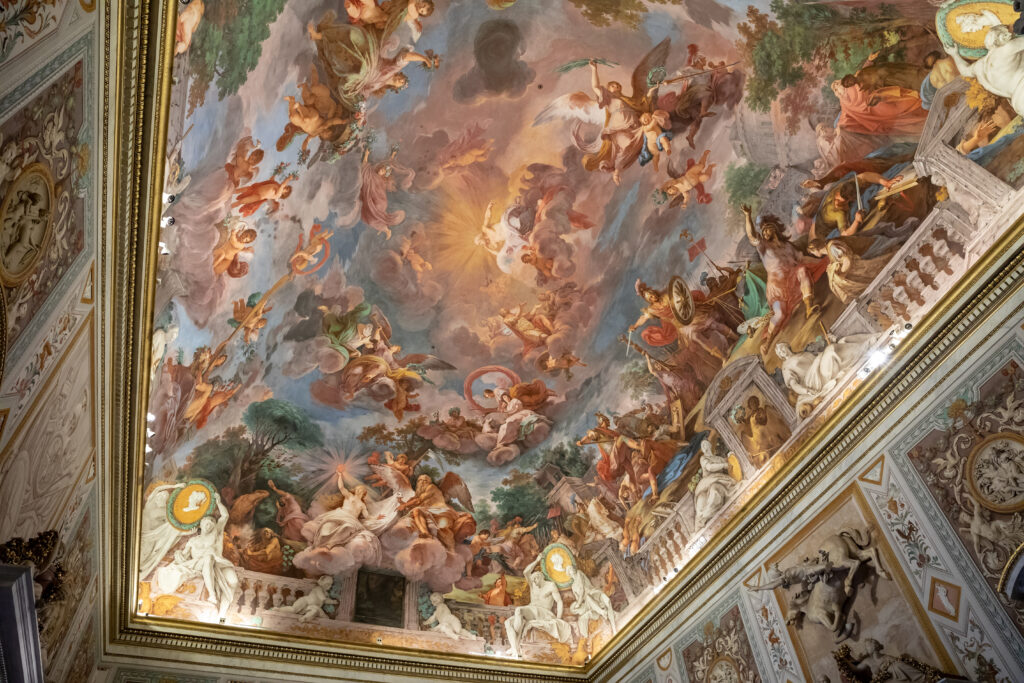Nestled within the lush greenery of Villa Borghese Gardens, the Galleria Borghese is one of Rome’s most treasured art museums and a must-visit for anyone passionate about art, history, or Italian culture. Famous for its extraordinary collection of Baroque and Renaissance masterpieces, the gallery offers a deeply immersive experience that blends the opulence of a 17th-century villa with some of the greatest works ever created.

Origins and History
The Galleria Borghese owes its existence to Cardinal Scipione Borghese, an avid art collector and nephew of Pope Paul V. Constructed between 1613 and 1616, the villa was originally designed not as a residence but as a showcase for his vast art collection and as a venue for cultural gatherings. Scipione was one of Gian Lorenzo Bernini’s earliest patrons and a key supporter of Caravaggio, two artists whose works define the gallery today.
The building itself is an architectural masterpiece, reflecting the grandeur of Baroque Rome. Over the centuries, the collection underwent changes—some pieces were moved to the Louvre and other museums during Napoleon’s occupation—but much of the original splendor remains intact. The Italian government assumed ownership in the early 20th century, opening the museum to the public.
Masterpieces and Highlights
The Galleria Borghese houses some of Bernini’s most celebrated sculptures:
- Apollo and Daphne (1622–1625), a dynamic marble group that captures the very moment Daphne transforms into a laurel tree to escape Apollo.
- The Rape of Proserpina (1621–1622), a dramatic depiction of Pluto abducting Proserpina, where Bernini’s skill makes marble appear soft and pliable.
- David (1623–1624), another Bernini triumph, presenting the biblical hero mid-action, winding up to hurl his sling.
The gallery is also home to Caravaggio’s masterpieces, including Boy with a Basket of Fruit, David with the Head of Goliath, and Saint Jerome Writing. These works showcase Caravaggio’s groundbreaking use of chiaroscuro and emotional realism.
Paintings by Titian, Raphael, Correggio, Rubens, and Antonello da Messina adorn the walls, while the ceiling frescoes and decorative details of the villa itself are works of art in their own right. The combination of sculpture, painting, and architecture creates an immersive environment that captures the spirit of Rome’s Golden Age.

The Villa Borghese Gardens
Surrounding the gallery, the Villa Borghese Gardens offer a peaceful escape from Rome’s bustling streets. Originally landscaped for the Borghese family, the gardens are now a public park filled with sculptures, fountains, and shaded pathways. A stroll here before or after your museum visit enhances the experience, offering views of Rome’s skyline and charming corners such as the Pincio Terrace.
Modern Museum Experience
Today, the Galleria Borghese limits the number of visitors per time slot, ensuring an intimate and uncrowded viewing experience. Reservations are mandatory, and visits are typically limited to two-hour periods—enough time to appreciate the masterpieces without feeling rushed. Photography is allowed without flash, but tripods and selfie sticks are prohibited to protect the artworks.
The museum has also embraced modern restoration efforts, using cutting-edge technology to preserve its treasures for future generations. For instance, Bernini’s sculptures have undergone careful cleaning to reveal their original brilliance, and Caravaggio’s paintings have benefited from advanced conservation techniques.
Tips for Your Visit
- Book tickets well in advance: The gallery’s timed entry system means slots can sell out weeks ahead, especially in high season.
- Arrive early: Give yourself time to check in and explore the gardens.
- Allow extra time: Pair your visit with a walk through Villa Borghese Gardens or continue to nearby attractions like Piazza del Popolo.
- Use a guide or audio tour: Understanding the context and symbolism of these works enriches the experience.
Why Galleria Borghese Is Unmissable
A visit to the Galleria Borghese is not just about viewing art—it’s about stepping into the world of the Borghese family, the genius of Bernini and Caravaggio, and the elegance of Rome’s Baroque period. The combination of breathtaking masterpieces, stunning architecture, and serene gardens makes it one of the most enchanting cultural experiences in Italy.
For travelers seeking to go beyond Rome’s iconic landmarks like the Colosseum or Vatican, the Galleria Borghese offers a glimpse into the city’s artistic heart, where creativity, power, and beauty converge in a setting that still feels personal and magical.

